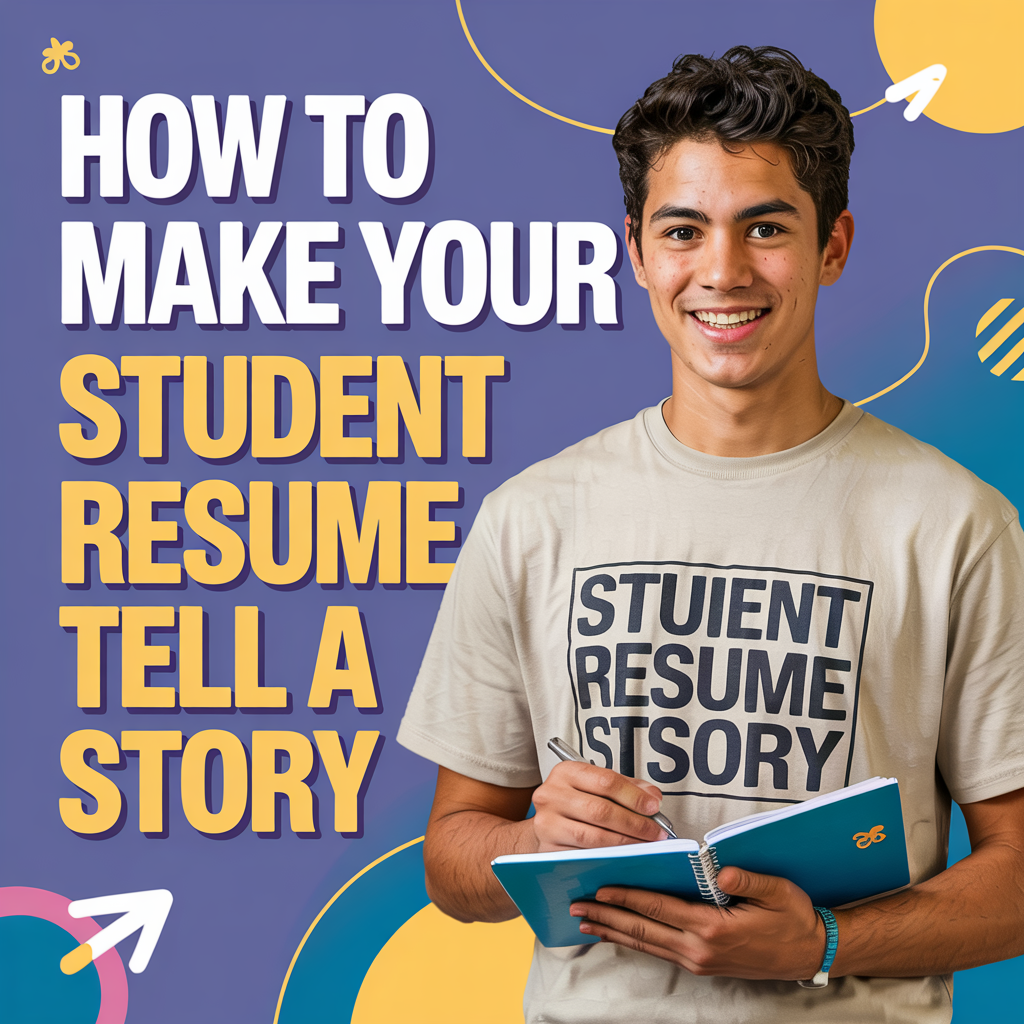Beyond Bullet Points: How to Make Your Student Resume Tell a Story (Not Just List Facts)

Your student resume is often your first chance to make a great impression on college admissions teams. Too often, resumes are simply lists of tasks and responsibilities. A narrative resume, however, tells a story. It highlights your achievements and demonstrates your impact. This article will show you how to move beyond boring bullet points and create a compelling narrative resume that gets you noticed.

Why Your Resume Needs a Story (Not Just Bullet Points)
Bullet points can be useful for quickly listing information. But they don’t capture the essence of your experiences. Colleges want to know what you accomplished, not just what you did. A narrative resume allows you to showcase your skills, passion, and personality in a way that a simple list can’t. It helps you stand out from the crowd and make a lasting impression. For a platform that helps you build a robust, story-driven profile beyond bullet points, consider exploring resources like Cirkled In.
From Task List to Impact Statement: How to Shift Your Thinking
The key to a narrative resume is shifting your focus from tasks to impact. Instead of just listing your responsibilities, think about the results you achieved. Ask yourself:
- What problem did I solve?
- What improvements did I make?
- What did I learn?
- How did my actions benefit others?
For example, instead of writing “Managed social media accounts,” try “Increased social media engagement by 30% through targeted content creation and community building.” This shows your impact and demonstrates your skills.
Action Verbs are Your Friends: Powering Your Narrative Resume
Using strong action verbs is crucial for creating a compelling story. Choose verbs that accurately describe your actions and highlight your achievements. Here are some examples:
- Instead of “Helped,” use “Assisted,” “Collaborated,” or “Supported.”
- Instead of “Worked on,” use “Developed,” “Implemented,” or “Managed.”
- Instead of “Responsible for,” use “Oversaw,” “Led,” or “Coordinated.”
These verbs add power and precision to your resume storytelling.
Show, Don’t Just Tell: Using Examples to Prove Your Point
Don’t just claim that you have certain skills or qualities. Provide specific examples to back up your claims. For instance, if you say you’re a good leader, describe a time when you led a team to achieve a specific goal. Quantify your results whenever possible. Numbers and data make your accomplishments more credible. You can use platforms like Cirkled In to add numbers and also tell your story (and it’s free!).
Weave in Your Personality (Authentically!)
Your resume is a reflection of you. Don’t be afraid to let your personality shine through. Use your own voice and express your passion for your interests and activities. Authenticity is key. Colleges want to get to know the real you.
Examples of Narrative Resumes for Students
Here are a few brief examples:
- Instead of: “Cashier at Grocery Store”
- Try: “Provided exceptional customer service as a cashier, resolving customer issues and efficiently processing transactions. Trained new hires, contributing to a positive and productive work environment.”
- Instead of: “Volunteer at Animal Shelter”
- Try: “Dedicated volunteer at local animal shelter, providing care and comfort to animals. Assisted with adoption events, resulting in a 15% increase in adoptions during the summer months.”
- Instead of: “Debate Club Member”
- Try: “Active member of the Debate Club, honing critical thinking and public speaking skills. Researched and presented compelling arguments, contributing to the team’s success in regional competitions.”
Conclusion: Narrative Resume: Tell Your Story, Not Just List Facts
Moving beyond bullet points and crafting a narrative resume is essential for showcasing your achievements and making a lasting impression on college admissions teams. By focusing on your impact, using strong action verbs, providing specific examples, and weaving in your personality, you can create a compelling story that gets you noticed. Platforms like Cirkled in allow you to build a dynamic portfolio alongside your resume, showcasing projects, awards, and extracurriculars that truly bring your story to life. Start building your narrative resume and comprehensive portfolio today!
Need more tips on college applications, scholarships, or just how to survive this whole process? Cirkled In has your back—check out Cirkled In resources to help you through every step of your college journey!
Check out Cirkled In and start owning your future today!



0 Comments